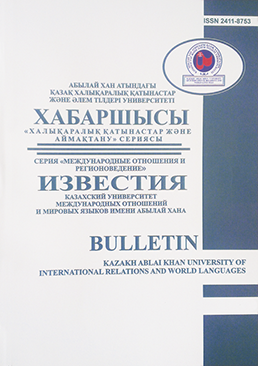ГЛОБАЛЬНАЯ ЦИФРОВИЗАЦИЯ И ЖЕНСКОЕ ОБРАЗОВАНИЕ: ВЫЗОВЫ РЕАЛИЗАЦИИ МЕЖДУНАРОДНОЙ ПОВЕСТКИ В ЦЕНТРАЛЬНОЙ АЗИИ
DOI:
https://doi.org/10.48371/ISMO.2025.61.3.020Ключевые слова:
цифровизация, образование женщин, гендерное равенство, Центральная Азия, международная повестка дня, цифровой разрыв, Цели устойчивого развития (ЦУР)Аннотация
В условиях стремительной цифровизации мирового пространства особое значение приобретает вопрос обеспечения равного доступа женщин и девушек к современным образовательным возможностям. Цифровые технологии становятся не только инструментом получения знаний, но и фактором социально-экономического развития, определяющим конкурентоспособность личности и страны. Центральная Азия, включающая Казахстан, Кыргызстан, Узбекистан, Таджикистан и Туркменистан, официально поддерживает ключевые международные документы в области гендерного равенства и образования, среди которых Цели устойчивого развития ООН, Пекинская платформа действий и Конвенция CEDAW. Вместе с тем, на практике реализация этих обязательств сопровождается многочисленными барьерами.
В статье подробно рассматриваются международные нормативные акты, формирующие глобальную повестку в сфере цифровизации образования и прав женщин, а также анализируются национальные стратегии и законодательные инициативы пяти государств региона. Показано, что наряду с формальными успехами сохраняются серьезные вызовы: недостаточная цифровая инфраструктура, региональные диспропорции в доступе к интернету, устойчивые социально-культурные стереотипы, ограничивающие девушек в выборе профессиональных траекторий, а также институциональные трудности внедрения международных стандартов.
На основе сравнительного анализа уровня цифровизации образовательной сферы и степени вовлеченности женщин в цифровые ресурсы выявлены ключевые направления, требующие особого внимания. В работе представлены практические рекомендации по устранению цифрового гендерного разрыва, укреплению институциональных механизмов и повышению эффективности выполнения международных обязательств.
Таким образом, статья отражает современное состояние проблемы и подчеркивает необходимость комплексного подхода, сочетающего инфраструктурные, культурные и управленческие меры для того, чтобы цифровая эпоха стала временем равных возможностей для всех.







